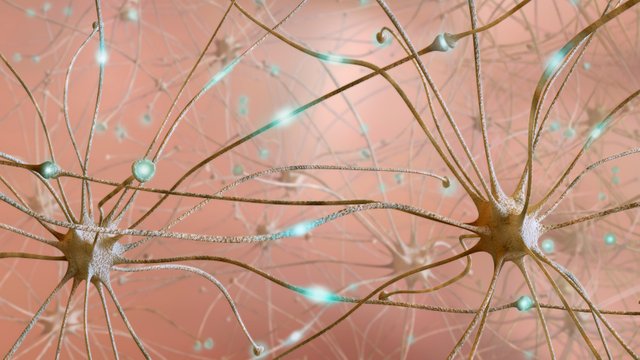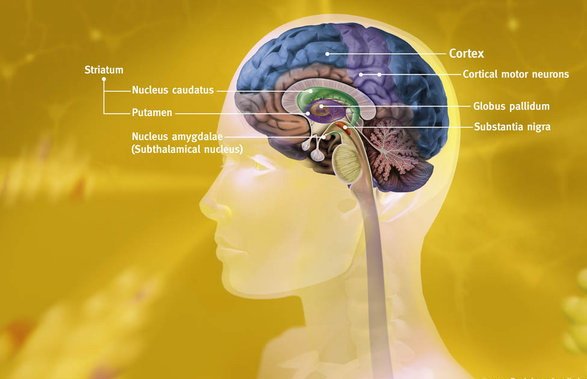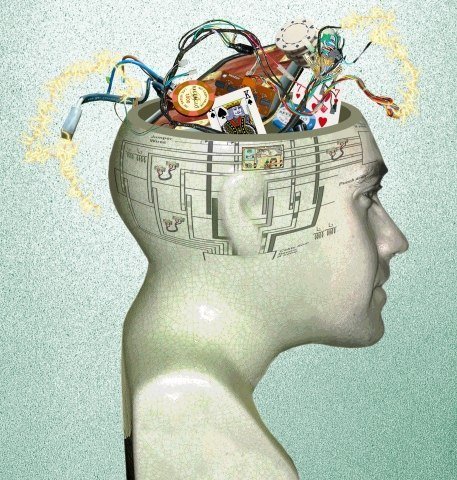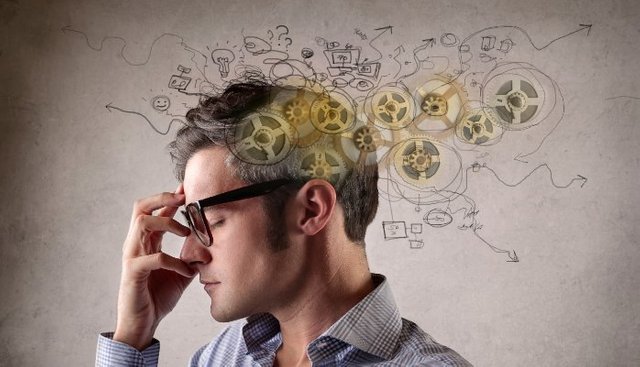How habits change the brain.
To the habit remained in the brain for a long time, it is necessary that the stimulating and inhibitory signals in the subcortical structures are reversed.
A habit is a deeply rooted type of behavior that works regardless of our consciousness. We automatically find the way to the kitchen in the morning, will automatically find, for example, a kettle will automatically go into the transport (or sit in the car), and not really reflect on what we are doing.
It is believed that the usual actions help to relieve the brain of routine, allowing it to do something more important. That is, from the point of view of neurophysiology, the resources of the prefrontal cortex, our main analytical center responsible for, let's say, conscious life, are unloaded. The habit itself goes into subcortical structures called basal ganglia, or basal nuclei. (To be more precise, we are now talking about innocuous behavioral rituals, and not dependencies on alcohol, nicotine, etc.) It is known that behavioral automatisms in behavior are born in the so-called striatum, or striatum, which refers to the subcortical basal ganglia, and the formation of a habit is accompanied by changes in electric rhythms: the gamma waves that arise when new information is learned are replaced by beta waves when the material is fixed.
Source "The cortex and subcortical structures with a striped (striatum), which are formed habits"
But what happens in the brain, in its basal nuclei, after the habit has already formed? To this question, neurobiologists from Duke University tried to answer: laboratory mice taught that if they press a device on the lever, they will get something sweet; As a result, some animals continued to press the lever even after the food from the device was removed. Further, the work of the brain of mice with a habit of pressing the lever was compared with the work of the brain of mice, who understood that there was nothing to wait for and ceased to be interested in the lever.
Basal nuclei control motor activity and literally control our desires, addictions, etc., that is, if we felt from somewhere the smell of a cake from which we are crazy, it is the basal ganglia that tell us to go where it smells and try do everything to have food with us. However, ganglia generate not only stimulating impulses, but also inhibitory, inhibitory; that is, the fulfillment of the desire ultimately depends on the balance between the oppositely directed signals in the basal ganglia. For example, if ahead is too dangerous, then, no matter how tasty it does not smell, you should not go there, and the neural stop signal is here at the right time.
So, in mice with a habit of pressing the lever, both signals of the basal ganglia intensified, and inducing and forbidding, however, compared to normal mice, these stimuli became the first by default. That is, if in ordinary animals the basal ganglia "understood" that in this situation there is nothing to wait and brought to the fore a suppressive impulse that forced to ignore the lever on the distribution of the treat, then in mice with a habit the stimulating signal in the subcortical structures continued to stimulate attempts to get a treat .
Changes in the brain function lasted quite a long time, and one could simply predict the behavior of neurons from the behavior of a mouse. Also, researchers emphasize that such a rearrangement of signals occurred in places not in any particular group of neurons, but in all basal ganglia (this probably explains why the craving for something alone serves as a pretext for a whole bunch of not always healthy habits).
Behavior of animals tried to change, giving them a treat in the event that they did not press the lever. Some have parted with the habit with difficulty, some have coped with it quickly - they, as it turned out, the neurons that generate the stimulus signal, worked weaker. Of course, the human brain is more complex than the rodent's brain, but on the whole the habit that has been formed obviously changes the functioning of the subcortical structures in the same way. And although habit and addiction are not the same, one often goes into the other, so if we can somehow suppress the neural mechanism of habit (for example, with the help of magnetic stimulation of the brain), we can protect ourselves from harmful addictions.





img credz: pixabay.com
Nice, you got a 61.0% @steemvoter upgoat, thanks to @kuku12170
Want a boost? Minnowbooster's got your back!
The @OriginalWorks bot has determined this post by @kuku12170 to be original material and upvoted(2%) it!
To call @OriginalWorks, simply reply to any post with @originalworks or !originalworks in your message!
Psychology is always difficult to understand and to explain as well. But your article is more easily understandable. Good work on this article.